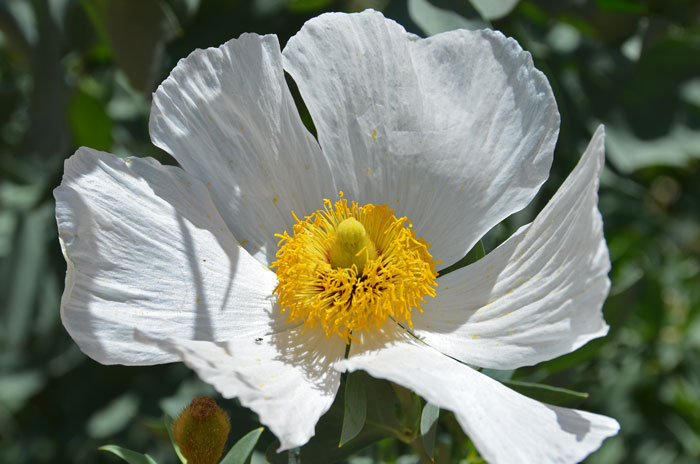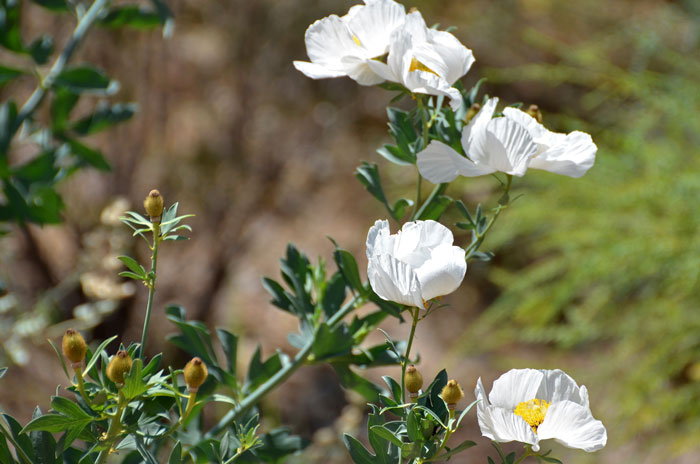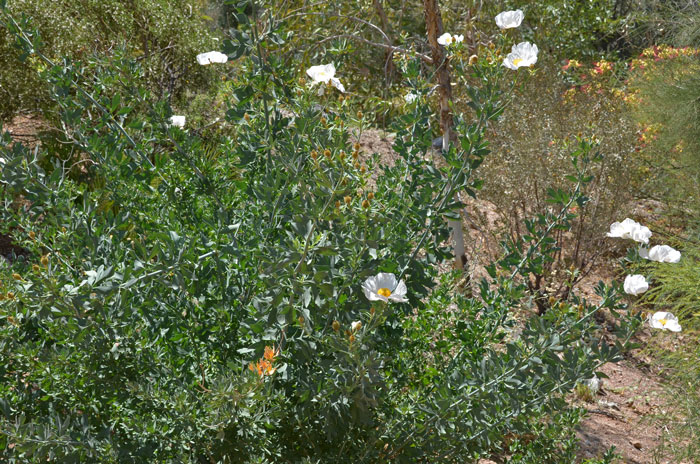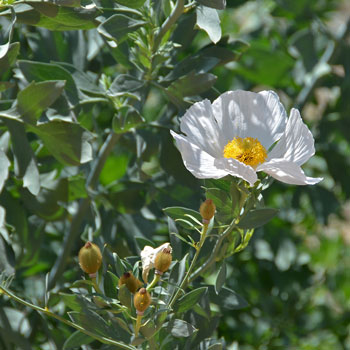Romneya coulteri, Coulter's Matilija Poppy





Scientific Name: Romneya coulteri
Common Name: Coulter's Matilija Poppy
Also Called: Matilija Poppy, (Spanish: Chicalote, Cardo, Amapola del Campo)
Family:
Papaveraceae or Poppy Family
Synonyms: ()
Status: Native
Duration: Perennial
Size: Up to 8 feet
Growth Form: shrub, subshrub; glabrous, branching, leafy, sap clear.
Leaves: Green, gray-green; leaves alternate with petiole; large, up to 7 inches or more long, pinnately deeply lobed.
Flower Color: White; anthers yellow; inflorescence terminal with 1 flower; 6 petals, 3 sepals fruit a capsule, seeds brown.
Flowering Season: April to August.
Elevation: Up to 3,500 feet.
Habitat Preferences: Dry washes, canyons.
Recorded Range: Coulter's Matilija Poppy is rare in the United States where it is scattered in a couple of locations in south-central and southern California. It is also native to Baja California.
North America & US County Distribution Map for Romneya coulteri.
U.S. Weed Information: No information available.
Invasive/Noxious Weed Information: No information available.
Wetland Indicator: No information available.
Threatened/Endangered Information: No information available.
Genus Information: USDA. Plants.gov lists 2 Species and 2 accepted taxa overall for Romneya. Both species are native plants limited in small populations to California.
The Plant List includes 2 scientific plant names of species rank for the genus Romneya.
Comments: According to The Jepson Manual, and The Flora of North America, Coulter's Matilija Poppy has one of the largest flowers of any native plant in California.
Coulter's Matilija Poppy has been used for as a beverage (Cahuilla). See ethno-botanical uses at Native American Ethnobotany, University of Michigan, Dearborn.

